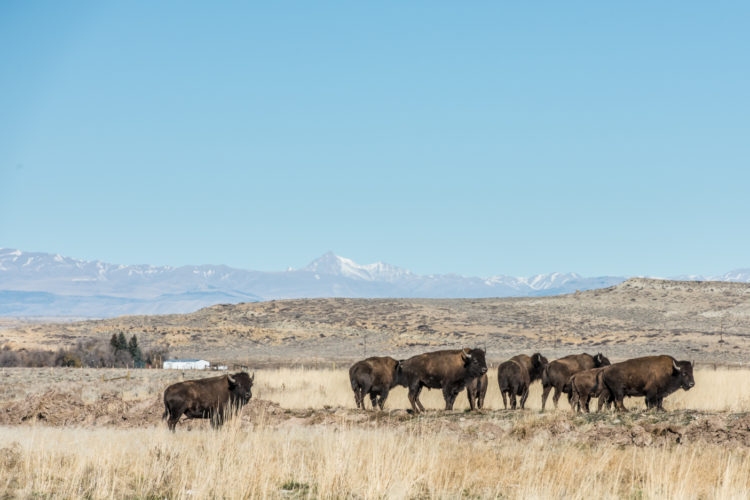We have much more to do and your continued support is needed now more than ever.
Wallowing in Politics
Time to Return Yellowstone Bison to Tribal Lands

In January 2016, the National Park Service released an environmental assessment for a new quarantine option that would place Yellowstone bison on the Fort Peck Reservation in northeastern Montana rather than ship them to slaughter. Yet, all these months later, the Park Service still has not issued a final decision on quarantine and relocation.
Why? Politics, plain and simple.
In the late 1990s, tribes, the National Wildlife Federation, and conservation partners proposed a solution to end the capture and slaughter of bison just outside of Yellowstone because of fears they would spread the disease brucellosis to livestock. It made much more sense, we suggested, to move healthy wild bison to new habitats. Why not have these exceptionally unique bison be the start of new herds by returning them to their historic tribal homelands? Yellowstone could and should be the source for bringing bison back across the West.
We proposed the quarantine of Yellowstone bison. It was a scientifically sound wildlife management proposal to certify bison as disease-free and bring them back to their rightful place on the plains. It would take an agonizingly long 12 years to make that a reality and, in the meantime, thousands of bison were sent to the slaughterhouse.

Between 2012 and 2014, nearly 200 Yellowstone bison were successfully restored to the Fort Peck Reservation without a hitch. The fears of bison disease, of buffalo escapes, of buffalo eating grass “meant for cows” were all proven unfounded. Quarantine and relocation worked. Yet, here we are today, stuck once in again in bureaucratic limbo.
Since last spring, after the release of the Yellowstone proposal to transfer bison to Fort Peck, forty bison have been held in a corral just outside Yellowstone, awaiting a decision from the Park Service to move forward. Those animals have tested negative for brucellosis at least seven times. And, despite more than 300,000 supportive public comments for the proposal, the Park Service continues to drag their feet.
Last February, I wrote about the irony of brucellosis being a disease that did not exist in wild bison herds until cattle transmitted it to them. Because of that absurdity, we have had to quell fears of bison transmitting brucellosis to domestic cows by quarantining wild bison. We made that compromise because we believe it is vital to restore bison throughout the West.
It is time to stop twiddling thumbs, because killing time based on false fears and politics means that more bison will be uselessly killed. Take action to help save 40 Yellowstone bison, and many more, by urging Yellowstone Park officials to approve the plan for moving bison to the Fort Peck Reservation.





















